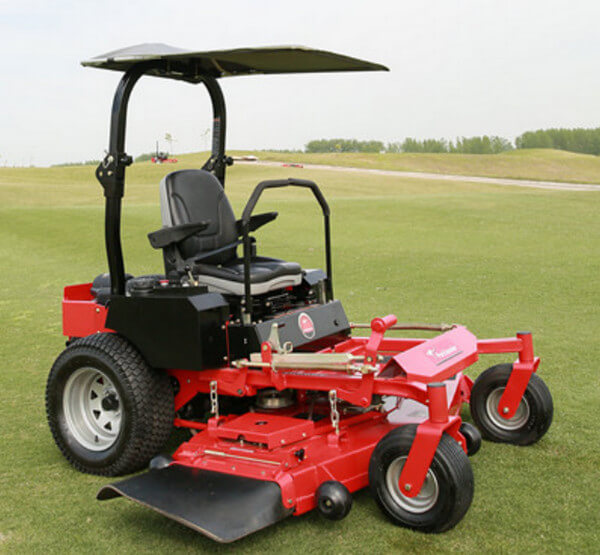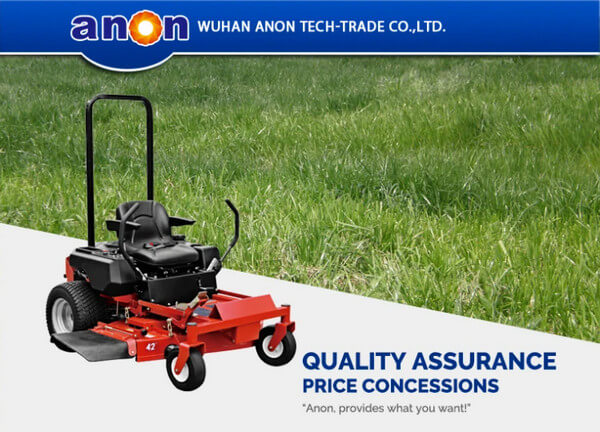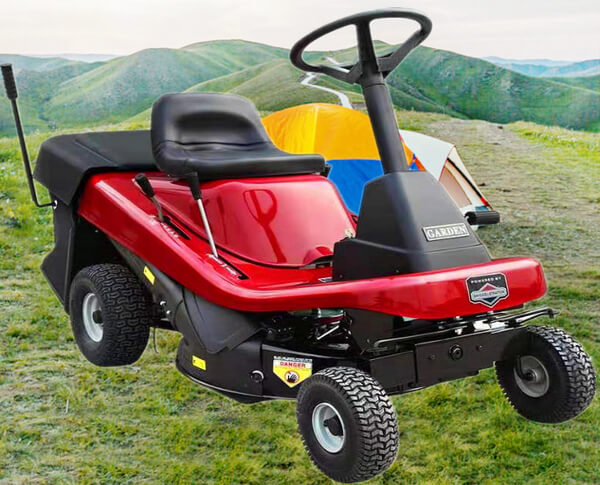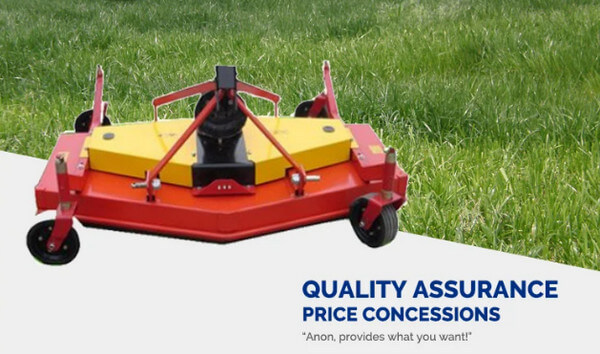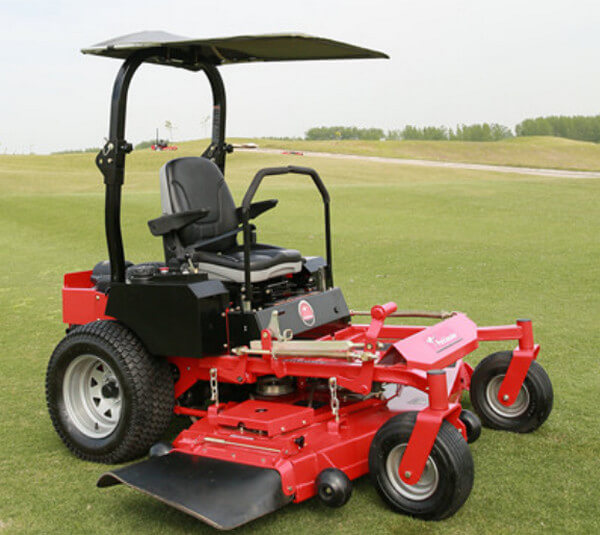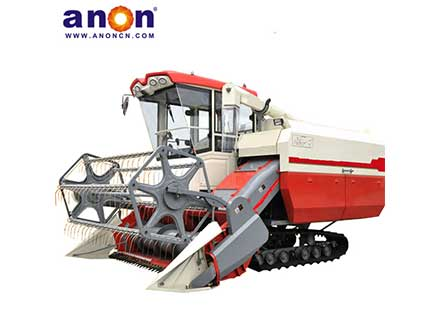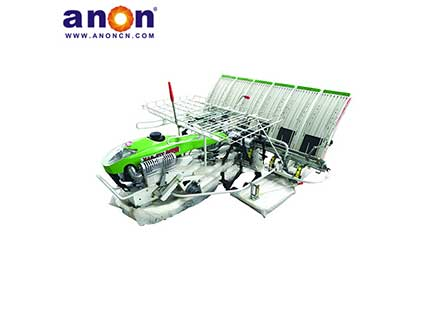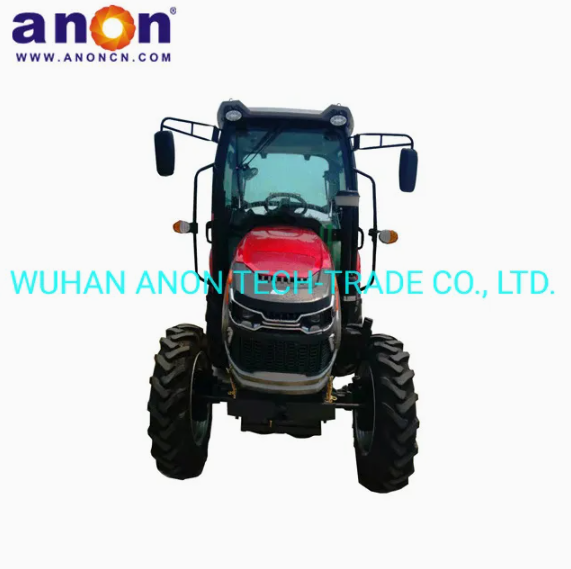Introduction
Are you frustrated with low mowing efficiency and quality? Why not try a zero-turn mower? You might not know much about it yet. In the next article, I’ll explain what a zero-turn mower is, its pros and cons, how it differs from a riding mower, and some driving tips. If you’re interested, keep reading!
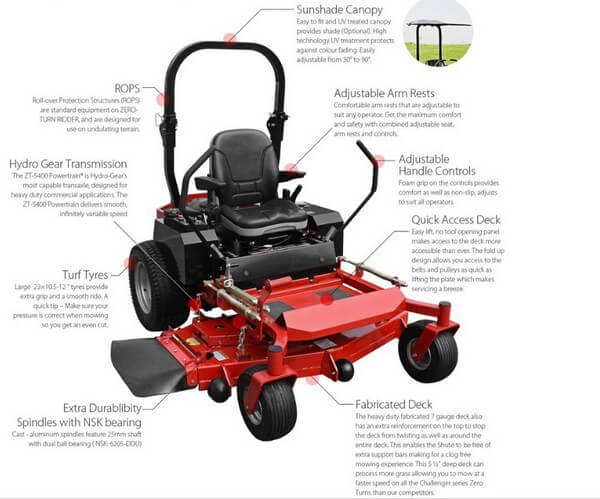
zero-turn mower
What does a Zero-turn Mower Mean
A zero-turn mower is a lawn trimming device that is widely popular among users due to its unique design and flexibility in operation. Its biggest feature is the ability to make zero-radius turns, which is possible because its drive wheels can be controlled independently, and it uses a dual-control lever system, allowing you to rotate the mower in place while driving.
How does a Zero-turn mower work
The zero-turn lawn mower works based on its unique power and steering system design.
It typically uses a gasoline engine or an electric motor as the power source. The engine transfers power through a drive system to the mower deck, where the blades spin at high speed to cut grass. An electric motor, powered by a battery, directly drives the mower deck. It offers low noise and zero emissions, making it ideal for residential and eco-friendly use.
The core of a zero-turn mower lies in its zero-turn radius steering system. There are two main ways to achieve this. First is differential steering. The left and right drive wheels are powered by separate hydraulic motors or electric motors. By controlling the speed difference between the two sides, the mower turns smoothly and efficiently. Second is independent wheel steering. Some models use a four-wheel independent drive system, where each wheel can be controlled separately in speed and direction. Combined with a hydraulic steering system, this allows for more precise and flexible maneuvering.
The mowing system typically includes a mower deck and blades. The deck is powered by the engine or motor and spins at high speed . Blades are mounted on the deck and use centrifugal force to cut the grass cleanly.
The drive system consists of drive wheels and caster wheels. The drive wheels provide forward motion, while the caster wheels help control direction. Zero-turn mowers feature a compact wheelbase and narrow track width, which greatly improves maneuverability.
The operator controls the mower’s direction and speed using a steering wheel or control levers. The steering system is highly responsive, allowing for smooth turns and even pivot turns on the spot.
How to Operate a Zero-turn Mower?
Step 1. Check your land and machine
First, check the work area, then perform a safety inspection on the mower. This includes checking the tire pressure, engine oil, voltage, and the condition of the blades and blade holder.
Step 2. Adjust machine
Adjust the seat and control levers to a comfortable position, and set the cutting height based on the condition of the lawn.
Step 3. Start the engine
Start the engine, and you are ready to drive.
Straight driving
When you need to move forward in a straight line, push both control levers forward at the same speed. The further you push, the faster you go. To move backward, pull the control levers back.
Turn
When turning, the control levers are used differently. For a left turn, push the right lever forward more than the left lever. To make a sharper left turn, push the right lever while keeping the left lever still or pulling it back slightly.
Turn in place
If you want to turn in place, push one control lever forward and pull the other lever back. The mower will spin in place.
Step 4. Stop working
To stop working, simply pull both control levers back to the neutral position. The mower will stop moving forward or backward.

zero-turn mower
The Pros and Cons of a Zero Turn Mower
After learning what a zero-turn mower is and how to drive it, I will discuss its advantages and disadvantages so you can have a better understanding of this mower.
Pros of Zero Turn Mower
Speed
Zero-turn lawn mowers are very fast because they usually have high-performance engines that provide strong power output, allowing them to maintain high speeds. For example, our ANON 52″ zero-turn mower can reach speeds of 15 kilometers per hour, giving it excellent working capability.
Precision
As I mentioned before, the main feature of a zero-turn mower is its very small turning radius, even allowing for zero-radius turns. This means the mower can move flexibly in tight spaces and get closer to the edges and corners of the lawn for trimming.
Additionally, the front swivel wheels allow the mower to turn easily, giving you better control over its path and enabling more precise trimming.
Time-Saving
Zero-turn mowers are highly maneuverable, allowing you to control the cutting path more accurately and avoid missing or overlapping areas. This high precision helps you save time that would be wasted on reworking.
Combined with their high speed and wider cutting width, zero-turn lawn mowers significantly reduce the time spent trimming your lawn, giving you more time to focus on other tasks.
Cons of Zero Turn Mower
Price
To ensure the performance of zero-turn lawn mowers, higher-quality materials and manufacturing processes are typically used. Advanced technologies and designs, such as the independently driven rear wheel system and precise hydraulic system for zero turning, also increase manufacturing costs. As a result, zero-turn lawn mowers tend to be more expensive.
No Rough-cut
In general, zero-turn mowers are not very suitable for thick grass, as their blades may struggle to cut through it quickly and effectively. This can lead to clogs or jams, increasing the mower’s burden. Therefore, you need to trim the lawn regularly.
Unsafe on slopes
Because the drive wheels of zero-turn mowers are controlled independently, this design can cause stability issues when driving on slopes. One side’s traction may decrease, leading to instability.
Additionally, the seat is usually located in the middle or back of the mower, making it easier for the center of gravity to shift and increasing the risk of tipping over. If you want to use it on a slope, it’s best not to exceed a 15-degree angle.
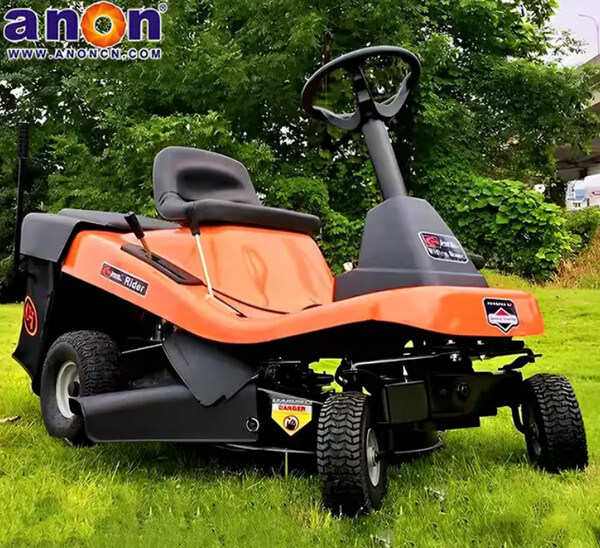
riding lawn mower
Zero-turn Mowers vs. Riding Mowers
After discussing the advantages and disadvantages of zero-turn lawn mowers, we will shift our focus to riding mowers. I will compare the two to help you choose the equipment that best fits your needs.
Flexibility
In terms of flexibility, zero-turn lawn mowers far outperform riding mowers. The front swivel wheels allow the mower to move freely in multiple directions, greatly enhancing maneuverability. This makes it easier to operate in tight spaces.
Plus, the dual independent drive system lets the wheels on each side run separately at different speeds, making it very flexible.
Efficiency
Zero-turn mowers not only excel in speed and cutting width compared to riding mowers, allowing for quick trimming, but they also have larger fuel tanks, enabling them to complete more cutting tasks in one go.
Additionally, zero-turn lawn mowers can turn quickly, avoiding the time wasted on adjustments needed when riding mowers turn.
Versatility
Most zero-turn lawn mowers can be equipped with attachments and tools, such as mulching kits and grass catchers. The mulching kit helps spread the cut grass evenly over the lawn, providing some fertilizing and moisture benefits. If you don’t want grass clippings left on the lawn, you can use a grass catcher to collect and dispose of them.
User-Friendly
Like regular driving tools, riding mowers use a steering wheel for control, making them easy to use since they match your usual driving habits. In contrast, zero-turn lawn mowers use dual control levers. While they are very flexible, you need to spend some time practicing to drive them well.
Maintenance
Zero-turn lawn mowers have a more complex design, featuring a precise hydraulic control system, a complicated drive system, and a unique rear wheel design, which can make maintenance more difficult. In contrast, riding mowers generally have simpler structures, making them easier to maintain and repair.
Should I Buy a Zero-turn Mower?
After learning about the features of zero-turn mowers, you might be wondering if you should buy one. There’s no doubt that a zero-turn mower is a high-efficiency, precision mowing tool — but it’s not the right choice for everyone. In the following section, we’ll help you decide whether this type of mower suits your needs.
We’ll look at typical usage scenarios and the kinds of users who benefit most from zero-turn technology.
Consider your intended use
If you’re mowing a residential yard with a complex layout, such as flower beds, trees, or curved edges, a zero-turn mower can save you a lot of time and effort compared to a traditional mower.
Its precise handling and tight turning radius make it easy to navigate around obstacles, which reduces the need for extra trimming.
This makes it a great choice for homeowners who care about a neat, well-manicured lawn.
Think about the size of your lawn
If you need to maintain a large area of grass, a zero-turn mower is almost a must-have.
Commercial models typically come with more powerful engines, wider cutting decks, and larger fuel tanks.
This allows for longer, uninterrupted operation — ideal for parks, sports fields, golf courses, and other large-scale properties.
Consider mowing efficiency
Finally, if you’re a professional landscaper who values efficiency, cut quality, and equipment durability, a zero-turn mower is a powerful asset.
Its precise control and high-speed performance can significantly boost your productivity and help you deliver better results to your clients.
It’s a smart investment for those who rely on consistent, high-quality mowing every day.
Future Trends in Zero-turn Mower
As technology advances and consumer needs change, ZTR mowers are also evolving. The future trends for zero-turn mowers will focus on being eco-friendly, automated, and incorporating smart technology.
Eco-friendliness
Consumers are increasingly demanding green and eco-friendly products, so zero-turn lawn mowers are starting to shift towards electric models. If they don’t, they risk being eliminated from the market.
Automation
Although zero-turn mowers are very flexible and efficient, future models will gradually become more automated, allowing them to operate independently.
Intelligent technology
Future zero-turn lawn mowers will integrate Internet of Things (IoT) technology, allowing remote control with devices like smartphones and enabling real-time monitoring of mowing status.
Why Choose ANON Zero-turn Mower?
Since ANON was founded over ten years ago, we have focused on exporting agricultural machinery. Our machines are highly praised for their quality and service. ANON’s zero-turn lawn mowers not only excel in engine power, cutting speed, and price, but they also outperform competitors in performance and durability. Feel free to reach out for more information!
FAQ
Are zero-turn mowers just for large yards?
Of course not! Zero-turn mowers come in different cutting widths, so you can choose based on the condition of your lawn. No matter the size of your yard, a zero-turn mower will be the perfect solution for trimming your lawn!
What size zero-turn lawn mower is suitable for an area of 1 acre?
The choice of a suitable zero-turn lawn mower depends on the area you want to mow. Generally speaking, if the area is less than 1 acre, a mowing width of 34 inches to 48 inches may be sufficient. For an area of 1 to 3 acres, a 48-inch to 54-inch lawn mower disc is usually a good choice. For an area of 3 to 5 acres, you may need a mowing width of 48 inches, 54 inches, or greater.
What is the expected lifespan of a zero-turn lawn mower?
The average service life of a zero-turn lawn mower is 5 to 15 years.
When is the best month to purchase a zero-rotation lawn mower?
Why is early spring the best time of the year to buy a lawn mower…
That’s why the best months to buy a ride-on lawn mower (or zero turn) are March and April: new models are entering the showroom. One of the reasons why March and April are the best months to buy a ride-on lawn mower is that you can purchase new models.



